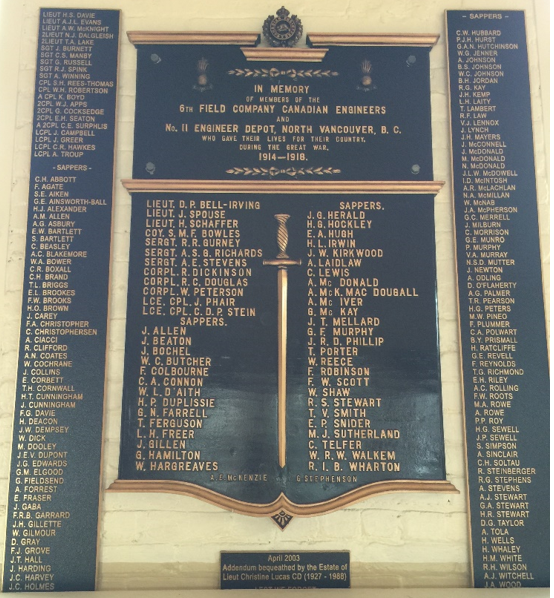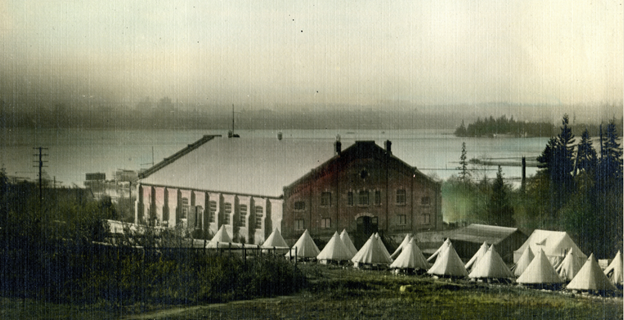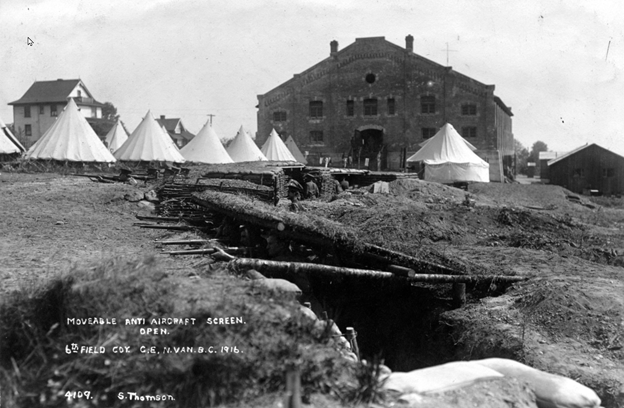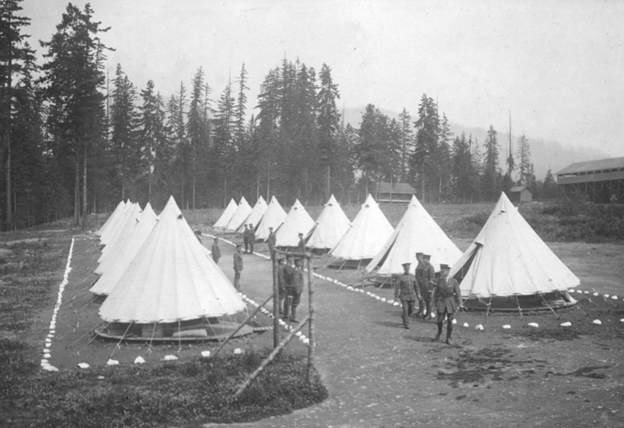
39 CER Museum Dioramas & Plaques

39 CER Museum Dioramas & Plaques
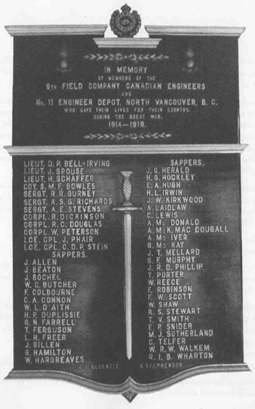
Original 1922 Memorial Plaque
WWI Memorial Plaque
In I922. after the end of World War One, the serving
officers of Six Field Company met to plan and finance a memorial plaque
honouring those of the Unit who were hilled in action during the Great War.
Immediately after WW I, incomplete records were the norm,
resulting in a list of names generated at by guesswork alone. Eventually
52 names were catalogued. A handsome plaque was manufactured and mounted on the
armoury interior wall. It has been there ever since.
The Missing 144
In 2000, Museum Curator Lt Col Vince Larocque accessed newly
recorded computer data at the National War Museum. Through painstaking research
he found that 144 names had been omitted from the 1922 list and therefore did
not appear on the Plaque.
Eventually it was decided by the 6 FES Museum Association to
add the names in such a fashion it did not disturb the existing plaque. This
was achieved by designing two plaques; each showing 72 names, mounted on either
side of the 1922 plaque. In the meantime, the original plaque was removed and
renovated to its former splendor.
Although 85 years had passed, 6 Field Engineer Squadron
would be remiss in not identifying, by name, all those brave Members who fell
during the First World War.
Funding for the project was provided through North Vancouver
Branch 118, The Royal Canadian Legion, by the estate of the late Lieutenant
Christine Lucas CD, (1928 - 1997), who served in the Canadian Women's Army
Corps during WW2, and with Six Field Engineer Squadron afterwards.
Why So Many Names? -- Many
More than Major Fell and the 1st Draft!
After the departure
of Maj Fell and the first draft on August 10, what remained of the 6th
Field Company CE was tasked to operate a training centre under the command of
Capt. J. E. Ward. For the first year their armoury was Larson’s Dance Pavilion.
Then in 1915 they moved up the hill to the new armoury on Forbes Avenue.
Around the new armoury
there arose an extensive training base with a cookhouse, workshops, a tented
camp, storage buildings, stables and a barrack block. Just to the north, in
Mahon Park, bridges, bunkers, barbed wire fences and trenches appeared. By 1918 a second satellite camp was operating at
Hastings Park
in Vancouver.
At these two camps
the soldiers received their basic recruit and engineer training. After graduation
the majority formed into drafts and boarded trains for bases in either Ottawa or Quebec.
There they received even more training before setting sail for England. In
England they went into other camps to receive yet more training before sailing
to the continent. Those who remained behind in North Vancouver ran the training
center, manned the searchlights at the Navy base in Esquimalt, went on
recruiting drives or worked on engineering projects. The 6th also became
responsible for the training of Forestry Corps and Railway Construction Corps troops.
From the start of WWI
until the Armistice 100 separate drafts were trained and dispatched from North
Vancouver for service overseas. A total of 4,176 recruits were trained of which
3,629 saw service overseas, the majority in France,
Belgium and England.
Over 200 members of the 6th died on active duty, both in Canada
and overseas.
